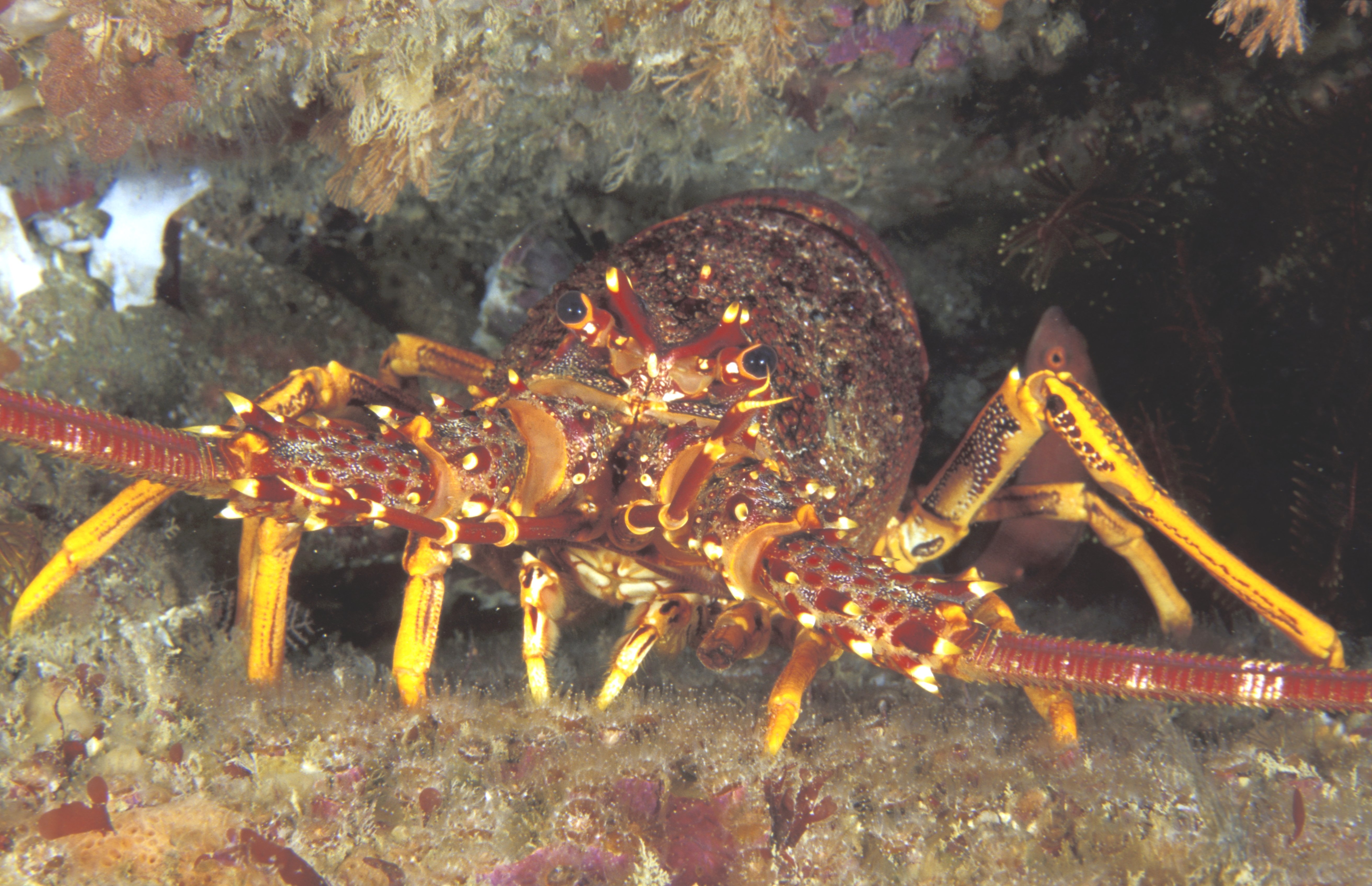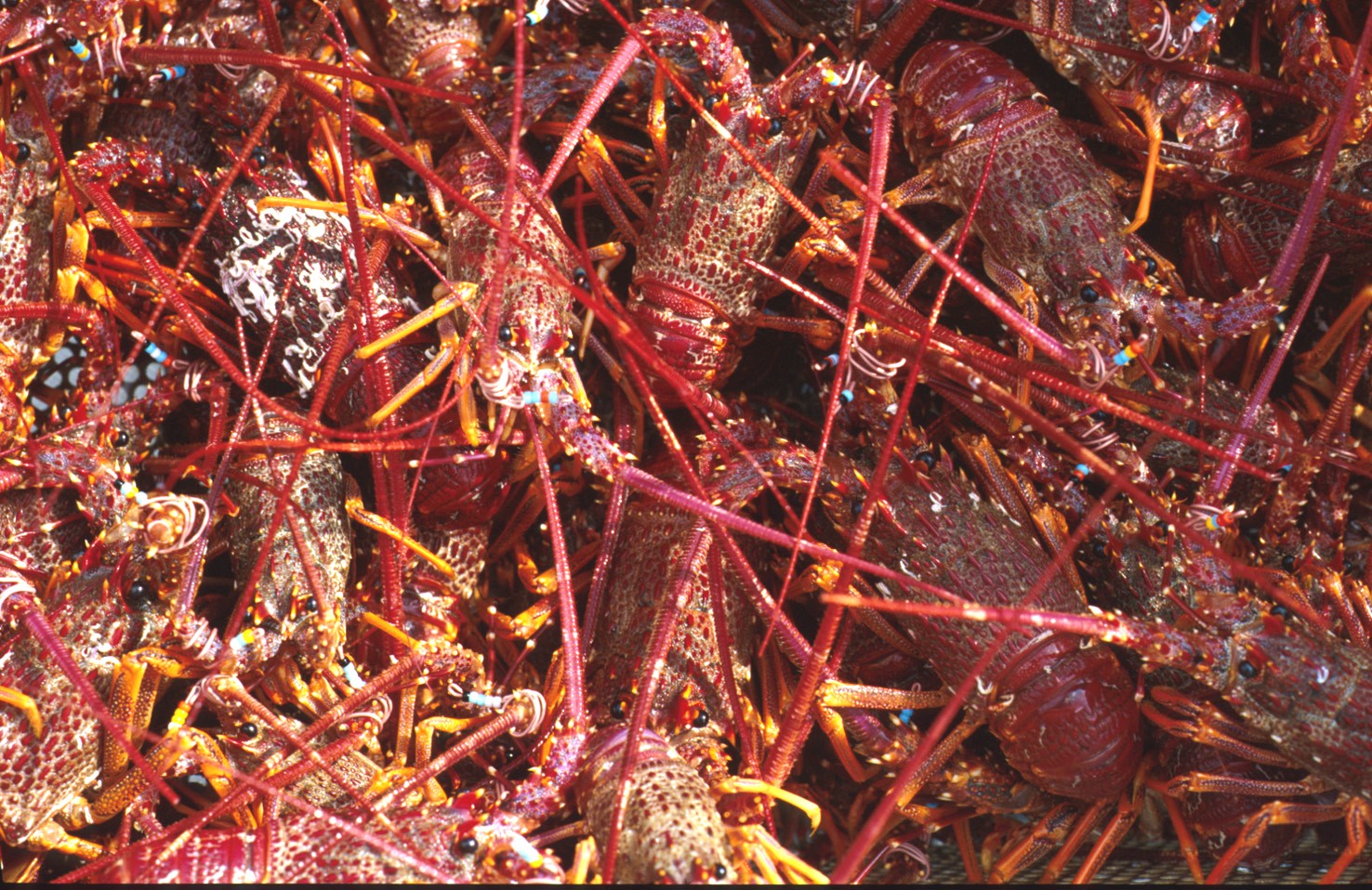Commercial Catch Per Unit Effort (CPUE)
Catch per unit effort (CPUE) is measured in kg of lobster per potlift in the Southern Rock Lobster fishery. CPUE is used as index of abundance and for Southern Rock Lobster the relationship between CPUE and abundance is strong. The long-term CPUE data across Tasmania reveals that the stock has decreased substantially through time, particularly given that early CPUE values were obtained by vessels fishing with substantially lower technology and hence lower efficiency. Important technological improvements that have occurred include GPS, weather forecasting and sophisticated sonar / 3D mapping technology used on some modern vessels. This effect is often referred to as technological creep.

Rock lobster in the crevice of a rocky reef.
In addition to technological creep there are other factors that can influence CPUE and are unrelated to biomass. This includes new entrants to the fishery, changing seasonal fishing patterns and targeting of different sized lobsters. The latter two are often driven by market forces and the desire to maximise profits. Since we want to use CPUE as an index of abundance these factors which are unrelated to biomass are problematic. To address this a process called CPUE standardisation is conducted. This is a statistical process that removes many of these problematic factors to provide a fair comparison – if the same fisher had fished the same area at the same time of year how would we expect their CPUE to have varied over time.
The CPUE is presented in both nominal and standardised values. As the standardisation removes the effect of processes unrelated to abundance on CPUE it provides an index that is more indicative of stock abundance and less influenced by changing fisher behaviour / fishing patterns.
The CPUE standardisation conducted for this assessment addresses effects of:
- Month (and therefore season)
- Assessment area
- Vessel
- Moon Phase
- Depth
Factors that are difficult to account for and most concerning are changes to the fishing behaviour of a large proportion of the fleet that cannot be detected from logbooks. For example, if high CPUE and market forces combine to promote large-scale high-grading of catch. That is, the situation of fishers reporting a smaller retained catch than the actual number of legal size lobsters captured in pots. Fishers report that the incidence of high grading is currently small enough to not affect this assessment, however, this is likely to become increasingly common as stocks recover.
The state-wide nominal and standardised CPUE is provided in the Explorer. The standardised catch rate shows that following the introduction of ITQs there was a steady increase in lobster abundance through a combination of several good recruitment events and constrain in catch through the TAC. These recruitment events were followed by record low recruitment leading to dramatic CPUE declines from the 2006/07 season. In response the TACC was progressively and dramatically reduced from 1523.5t in 2008/09 to the current value of 1050.7t in 2014/15. Since that time CPUE has increased steadily with especially large increases in 2016-18 and 2021-23. This indicative of the punctuated nature of lobster recruitment and with current management arrangements resulting in ongoing stock rebuilding.




